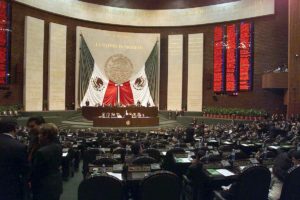Because of the losses that we have experienced throughout this 2017, we took on the task of investigating what actions in past years, were carried out by the government on the subject of taxes, due to natural disasters.
These actions can be seen reflected in the decrees issued by the federal executive, such as the one published in the Official Gazette of the Federation in 2013. “Decree granting various tax benefits to taxpayers in the zones affected by severe rains during September 2013. “
We will begin by explaining what a decree means and what it has:
Decreto: es la decisión de una autoridad sobre la materia en que tiene competencia. Suele tratarse de un acto administrativo llevado a cabo por el Poder Ejecutivo, con contenido normativo reglamentario y jerarquía inferior a las leyes.
 This means that when the Constitution authorizes the Executive Power to issue rules with force of law for a limited time and for objects defined on the basis of Article 71 of the Political Constitution of the United Mexican States , a decree is issued.
This means that when the Constitution authorizes the Executive Power to issue rules with force of law for a limited time and for objects defined on the basis of Article 71 of the Political Constitution of the United Mexican States , a decree is issued.
A natural disaster coupled with the possible loss of human lives, entails serious economic damage. Faced with this, actions are developed to reactivate local economic activity in the affected areas.
What benefits can tax decrees give to taxpayers?
Taking the example of the decree of the year 2013:
- It exempted from the obligation to make provisional payments of Income Tax (ISR), and Flat Rate Business Tax (IETU) to taxpayers who had their fiscal address, agency, branch or any other establishment, in the zones affected
- A tax incentive was granted to taxpayers with tax domicile, agency, branch or any other establishment, in the affected areas, which consisted in deducting immediately the investments made in new assets of fixed assets with respect to which they can be apply article 220 of the Income Tax Law.
- Taxpayers who made payments for wage income and, in general, for the provision of a subordinate personal service, except those assimilated to salaries, could receive ISR deductions from their workers in two equal installments, provided that the subordinated personal service (for which this income is paid) had been lent in those affected areas.
 It is important to mention that in order to co-respond to taxpayers (producers, workers and entrepreneurs), there is a financial instrument to deal with natural disasters and is aimed at supporting entities States, as well as the dependencies and entities of the Federal Public Administration, in the care and recovery of social welfare affected by a natural phenomenon, this financial instrument is known as Natural Disasters Fund ( FONDEN).
It is important to mention that in order to co-respond to taxpayers (producers, workers and entrepreneurs), there is a financial instrument to deal with natural disasters and is aimed at supporting entities States, as well as the dependencies and entities of the Federal Public Administration, in the care and recovery of social welfare affected by a natural phenomenon, this financial instrument is known as Natural Disasters Fund ( FONDEN).
Important facts about FONDEN:
- It was created by the Federal Government in the late 1990s.
- Originally it was established as an instrument through which federal funds were budgeted annually to finance expenses in response to disaster emergencies.
- Its purpose is to support emergency, recovery and reconstruction activities after the occurrence of a disaster.
- In 2005, with the purpose of increasing the fund’s coverage, the Government of Mexico granted FONDEN the authority to develop a catastrophic risk coverage strategy, which includes instruments and / or financial mechanisms for the retention and transfer of the risk.
- In 2006, Mexico issued the first sovereign catastrophic bond in the world.
- At present, FONDEN is composed of two complementary budgetary instruments: the FONDEN Program for Reconstruction and the Fund for the Prevention of Natural Disasters (FOPREDEN), and their respective trusts.
History warns that the aid was also provided in: Campeche before Hurricane Isidore in 2002; in Quintana Roo and Yucatán in 2005, before the passage of Hurricane Wilma also in 2005; in Chiapas, Oaxaca, Puebla and Veracruz for the damages caused by Stan in 2005; in Tabasco and Chiapas before the atypical floods of 2007; in Mexicali and San Luis Río Colorado, in Baja California and Sonora, respectively, due to the April 4 earthquake and the affected states.

